| Columns Retired Columns & Blogs |
Sumo Andromeda power amplifier Measurements
Sidebar 5: Measurements
A full set of measurements of the Sumo Andromeda III was made using its unbalanced inputs. Most readings were repeated with the balanced inputs and these are noted below where appropriate.
Following the 1/3-power, one-hour preconditioning test, the Andromeda III's heatsinks were quite hot, as was the top of the case itself. The input impedance measured 49.6k ohms (95.8k ohms, balanced). The output impedance was 0.033 ohms or below at 1kHz and 20Hz, increasing to a maximum of 0.39 ohms at 20kHz. The frequency response of the Sumo should be virtually independent of the loudspeaker load.
The amplifier is non-inverting when driven from its positive, unbalanced input; at the balanced, XLR input terminal, pin 2 is positive. The Andromeda III's voltage gain into 8 ohms measured 26.8dB, balanced or unbalanced. Unweighted signal/noise ratio (ref. 1W into 8 ohms) measured an excellent 91dB over a 22Hz–22kHz bandwidth. Over a 10Hz–500kHz bandwidth, still referenced to 1W into 8 ohms, it measured 87dB, unweighted, improving to 100.9dB when A-weighted. The corresponding figures for the balanced input were 92.7dB, 88dB, and 101.8dB, respectively. DC offset measured 2.4mV in both channels.
Fig.1 shows the frequency response of the Andromeda III (unbalanced input) at 1W into 8 ohms and into a simulated real load; there is only an insignificant difference between them. (The response at 2W into 4 ohms, was identical to the 8 ohm result, and the balanced results, not shown, were also virtually the same as the unbalanced.) The 10kHz squarewave of fig.2 is excellent, with only a small rounding of the leading edge and a good risetime. The 1kHz squarewave response, not shown, is nearly textbook, with only a slight tilt of the top and bottom of the waveform indicative of very low-frequency rolloff. Fig.3 shows the Andromeda III's crosstalk. The balanced result is only marginally better than the unbalanced; this is a first-rate result.
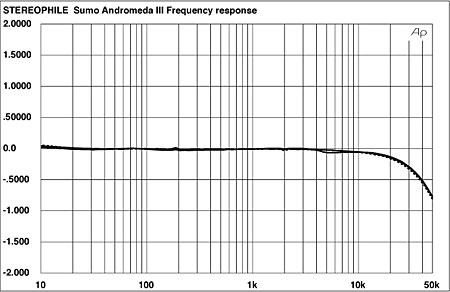
Fig.1 Sumo Andromeda III, frequency response at 1W into 8 ohms (top at 10kHz) and into simulated speaker load (right channel dashed, 1dB/vertical div.).
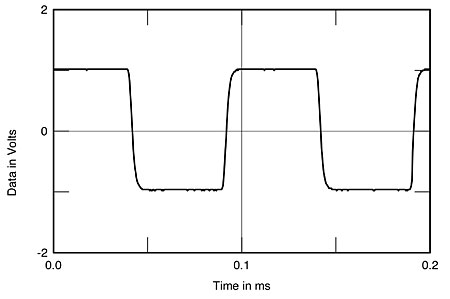
Fig.2 Sumo Andromeda III, small-signal 10kHz squarewave into 8 ohms.
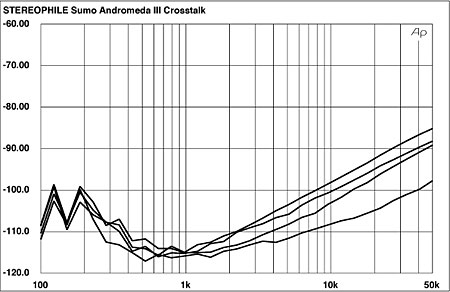
Fig.3 Sumo Andromeda III, crosstalk (from top to bottom at 10kHz): L–R unbalanced, L–R balanced, R–L unbalanced, R–L balanced (10dB/vertical div.).
The Sumo's THD+noise vs frequency curves are plotted in fig.4. The results show very low levels of distortion, with some increase into lower impedance loads, and marginally but insignificantly lower values using the balanced inputs. The waveform of the distortion at 4W into 2 ohms is shown in fig.5. It is heavily second-harmonic, with noise, plus limited higher-order components. The result is similar into 4 ohms and 8 ohms (not shown), though it appears to have even lower high-harmonic content into these higher impedances.
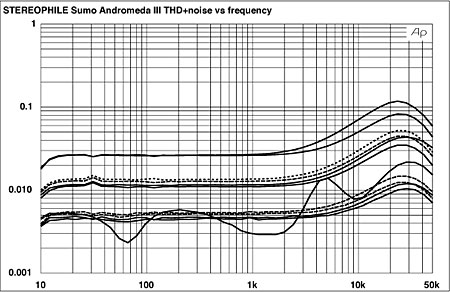
Fig.4 Sumo Andromeda III, THD+noise vs frequency at (from top to bottom at 1kHz): 4W into 2 ohms (unbalanced, then balanced), 2W into 4 ohms (unbalanced, then balanced), 2.83V into simulated speaker load (unbalanced), and 1W into 8 ohms (unbalanced, then balanced) (right channel dashed).
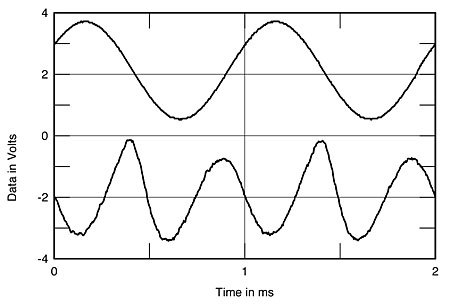
Fig.5 Sumo Andromeda III, 1kHz waveform at 4W into 2 ohms (top); distortion and noise waveform with fundamental notched out (bottom, not to scale).
The Andromeda III's output spectrum reproducing 50Hz at 268W into a 4 ohm load is shown in fig.6. The only artifacts greater than –80dB (0.01%) are at 150Hz (–66dB or about 0.05%) and 250Hz (–79dB or about 0.012%). We could not drive our simulated real load to this output level (it is not designed for high power), but driving it briefly to 100W resulted in the plot of fig.7—which is very similar to that of fig.6. The distortion components were somewhat different at 100W into a pure 4 ohm load (not shown), increasing to –75dB (about 0.017%) at 100Hz, and dropping below –90dB (0.003%) at all other frequencies.
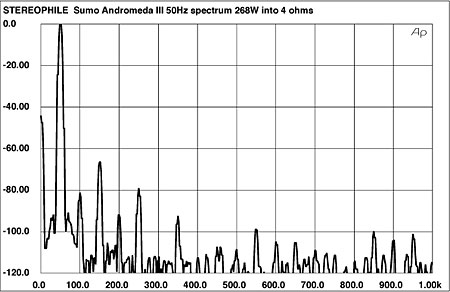
Fig.6 Sumo Andromeda III, spectrum of 50Hz sinewave, DC–1kHz, at 268W into 8 ohms (linear frequency scale). Note that the third harmonic at 150Hz is the highest in level, at –66dB (0.05%).
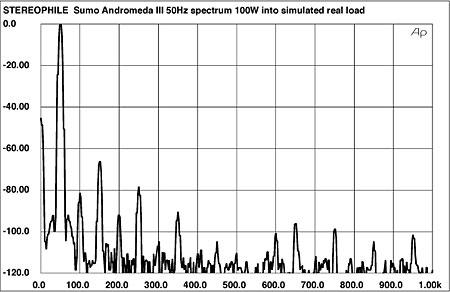
Fig.7 Sumo Andromeda III, spectrum of 50Hz sinewave, DC–1kHz, at 100W into simulated loudspeaker load (linear frequency scale).
Fig.8 shows the response to a combined 19+20kHz signal—the spectrum of the intermodulation products resulting from an input signal consisting of an equal combination of these two frequencies—at 268W into 4 ohms. This is a good result, with the largest artifacts at 2kHz (–66dB or 0.05%), and 18kHz and 21kHz (both at –72dB or 0.08%). At 160W into 8 ohms (not shown) the largest artifacts were at 18kHz and 21kHz (about –77dB or 0.015%).
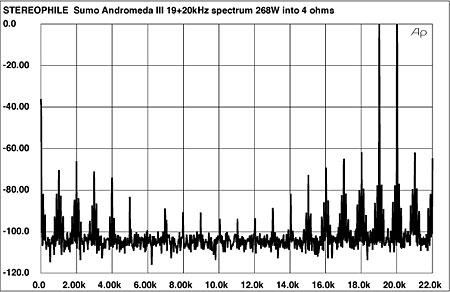
Fig.8 Sumo Andromeda III, HF intermodulation spectrum, DC–22kHz, 19+20kHz at 268W into 4 ohms (linear frequency scale, 0dB = –6dBr).
The 1kHz, THD+noise vs output power curves for the Andromeda III are shown in fig.9. Note that while the amplifier will put out slightly higher power at into 2 ohms than into 4 ohms at a 3% THD+noise figure, it puts out slightly less at our usual 1% limit. Although it will drive 2 ohms, the amplifier is not really comfortable doing so at sustained high power. In compiling the discrete clipping levels shown in Table 1, a power-supply rail fuse blew immediately after I acquired the 2 ohm result (the amplifier had been driven at this power for less than 3 seconds). I would not expect problems with most loads on music, but I would avoid using the Andromeda III at high levels with those few loudspeakers whose impedance curve dips significantly below 3 ohms over an extended range.
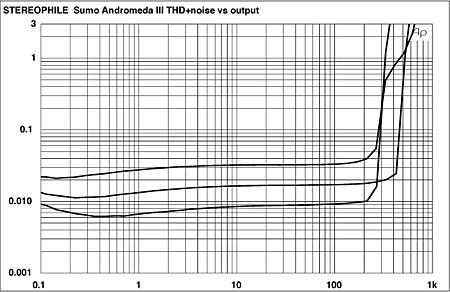
Fig.9 Sumo Andromeda III, distortion (%) vs output power into (from bottom to top at 100W): 8 ohms, 4 ohms, and 2 ohms.
Table 1 Discrete Clipping levels (1% THD+noise at 1kHz)
| Impedance | Both Channels Driven | One Channel Driven | |
| ohms | W (dBW) | W (dBW) | |
| L | R | L | |
| 8 | 267 (24.3) | 264.5 (24.2) | 314.5 (25) |
| 117V | 117V | 118V | |
| 4 | 400 (23) | 400.4 (23) | 511.4 (24) |
| 116V | 116V | 117V | |
| 2 | 471 (20.7) | ||
| 118V | |||
Sumo has indicated to me that the Andromeda's current-drive capability is limited by the fuse. In commenting recently on a similar fuse-blowing experience we had with the Andromeda II, they stated, "Blowing the fuses on the bench proves only how robust the fuses are, not the current-drive capability of the Andro II." For the user, however, the net effect is the same: reduced power available into 2 ohms. If the Andromeda III will safely put out more power into that load, why doesn't Sumo use a larger fuse? The answer, I speculate, is that while it will put out more power safely with music, continuous use at higher power into low impedances is not advisable, and a smaller fuse is used to prevent a careless user from damaging the amplifier.
There is little to criticize in the Andromeda III's measured performance; its only limitation was at high power into a 2 ohm load. While the amplifier does not really appear to be designed for heavy use into very low impedances, that will not be a limitation for most users. Otherwise, the Sumo is an excellent performer in all respects.—Thomas J. Norton
- Log in or register to post comments




































